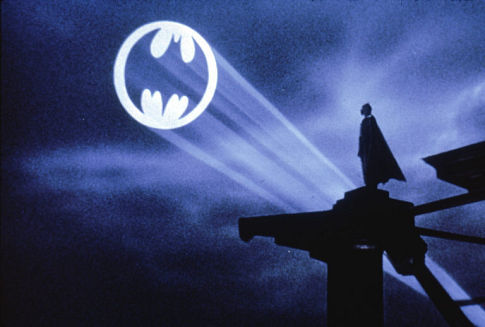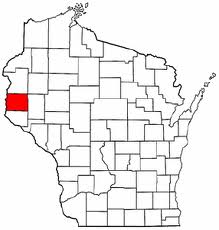Entries in bat bird death wind farm (2)
11/2/11 Studies indicate bats and birds plus big wind turbines equal big trouble. What about the same kind of study for the people in wind projects who are having health issues?
THE MYSTERIOUS LINK BETWEEN BATS AND WIND TURBINES
Source: Minneapolis Star Tribune
November 2, 2011
By Josephine Marcotty
For years researchers have been puzzled by the number of bats killed by wind turbines. Birds, yes. But bats, in theory, should be able to avoid the towers because of their innate sonar systems that orient them in space. Nonetheless, they die in the thousands, in far greater numbers than birds. Some research found that they died because the enormous changes in pressure as the blades sweep through the air ruptured their delicate ear drums, causing a hemorrhage known as barotrauma. Now, a new study based on bat autopsies from the University of Wisconsin found that the problem is far more complicated.
X-ray of a bat killed by a wind turbine at a southeastern Wisconsin wind energy facility during fall 2009. Note the compound fracture of the right arm and the dislocation of the right shoulder joint
The scientists found 41 dead bats over three months beneath 29 turbines in Wisconsin. They conducted autopsies, including X-rays, on the animals to determine precisely why they died.
"Half the bats had trauma to the inner ear -- their ear drums blew out," said David Drake, one of the researchers on the study published this week in the journal of Mammology. And three fourths had broken bones, primarily wings, he said.
Why does it matter? Because knowing why they die might help in designing towers and blades that are not quite so lethal, he said. For example, changing the shape of a blade could reduce the pressure gradient enough to prevent trauma to their ear canals, he said. Maybe changing the height of the tower would help avoid fatal collisions.
But the science is in its infancy, Drake said. in addition, not much is known about bats, much less about how they behave around wind towers or why they get close to them at all.
In the Midwest, migrating tree roosting bats are the ones that are killed most often. Drake said one theory is that they look for the tallest thing on the landscape -- often a wind turbine -- in which to roost and mate. There are also studies that correlate bat deaths with low wind, perhaps because that's the best time for bats to feed. "They are so focused on feeding that they don’t pay attention to the blades until it's too late, Drake said. Even so, the bats need 20 meters to sense to a moving object. But the blades of a turbine move so fast they have only a quarter second to move out of the way.
Drake said no one has a good estimate of how many bats are killed by wind turbines. But now it matters more than ever because bats are being decimated by a disease called white nose syndrome that destroys whole colonies. The disease is common in east, and is steadily moving west. So the total impact on bats is worrisome.
"With white nose syndrome coming, all bets are off," he said. "When they are suffering 100 percent mortality from white nose, then added mortality from wind farms, it's hard to tell."
NEXT STORY :
GROUP REPORTS BIRD KILLS AT WEST VIRGINA WIND FARMS
October 31, 2011
With the deaths of nearly 500 birds at the Laurel Mountain wind facility earlier this month, three of the four wind farms operating in West Virginia have now experienced large bird fatality events, according to American Bird Conservancy (ABC), the nation’s leading bird conservation organization.
“Wind energy has the potential to be a green energy source, but the industry still needs to embrace simple, bird-smart principles that would dramatically reduce incidents across the country, such as those that have occurred in West Virginia,” said Kelly Fuller, ABC’s wind campaign coordinator.
There were three critical circumstances that tragically aligned in each of the three West Virginia events to kill these birds. Each occurred during bird migration season, during low visibility weather conditions, and with the addition of a deadly triggering element – an artificial light source. Steady-burning lights have been shown to attract and disorient birds, particularly night-migrating songbirds that navigate by starlight, and especially during nights where visibility is low such as in fog or inclement weather. Circling birds collide with structures or each other, or drop to the ground from exhaustion.
At the Laurel Mountain facility in the Allegheny Mountains, almost 500 birds were reportedly killed after lights were left on at an electrical substation associated with the wind project. The deaths are said to have occurred not from collisions with the wind turbines themselves, but from a combination of collisions with the substation and apparent exhaustion as birds caught in the light’s glare circled in mass confusion.
On the evening of Sept. 24 this year at the Mount Storm facility in the Allegheny Mountains, 59 birds and two bats were killed. Thirty of the dead birds were found near a single wind turbine that was reported to have had internal lighting left on overnight. This incident stands in stark contrast to industry assertions that just two birds per year are killed on average by each turbine. Data from Altamont Pass, California wind farms – the most studied in the nation – suggest that over 2,000 Golden Eagles alone have been killed there.
On May 23, 2003 at the Mountaineer wind farm in the Allegheny Mountains, at least 33 birds were killed. Some of the deaths were attributed to collisions with wind turbines and some to collisions with a substation.
“The good news is that it shouldn’t be hard to make changes that will keep these sorts of unnecessary deaths from happening again, but it’s disturbing that they happened at all. It has long been known that many birds navigate by the stars at night, that they normally fly lower during bad weather conditions, and that artificial light can draw them off course and lead to fatal collision events. That’s why minimizing outdoor lighting at wind facilities is a well-known operating standard. And yet lights were left on at these sites resulting in these unfortunate deaths. This reinforces the need to have mandatory federal operational standards as opposed to the optional, voluntary guidelines that are currently under discussion,” Fuller said.
A fourth wind farm in West Virginia, the Beech Ridge Wind Energy Project in Greenbrier County, has not experienced large mortality events, likely because it is currently prohibited by a court order from operating during nighttime between April 1 and Nov. 15.
“Some West Virginia conservation groups have suggested that other wind farms in the state should shut down their wind turbines at certain times and seasons to protect birds. Given the recurring bird-kill problems, that idea needs to be seriously considered, at least during migration season on nights where low visibility is predicted. A wind farm in Texas is doing just that, so it is possible.” said Fuller.
4/7/10 Why are so many bats dying in Wisconsin wind projects? Shining a spotlight on a glaring problem
Want to keep up with what's going on with the wind siting council?
Remember to check the docket
Public Service Commission of Wisconsin
Docket 1-AC-231
CLICK HERE for location, time and dates of WSC meetings.
NOTE: The 9:00am meeting scheduled for this Friday will be conducted by telephone. The PSC is still working out the details of how the public will have access to it.

When it comes to big wind projects, bats in Wisconsin are in need of a super-hero
Three recent reports indicate bat kill rates in Wisconsin wind projects are ten times the national average. No state except Pennsylvania has ever had such high bat kill numbers which are among the highest in North America.
[CLICK HERE Download the We Energies Post Construction Bird and Bat Mortality Final Report]
How many bats are dying in Wisconsin wind projects?
According to the We Energies report, 3,500 bats a year are being killed in the Blue Sky Green Field 88 turbines project. Each 1.5 MW turbine represents 41 bat deaths a year. According to the study, 7,000 bats have perished in the Blue Sky, Green Field wind project during the last two years.
The kill rate is the same in the Cedar Ridge project. The Invenergy Forward project may show higher bat kill numbers.
Given this, Better Plan felt the following posting on the Wind Siting Council Docket was especially worth reading.
WHAT'S ON THE WIND SITING COUNCIL (WSC) DOCKET TODAY?
Visit the docket by CLICKING HERE. The docket number to enter is 1-AC-231
Public comment from Brown County resident regarding concerns about lack of DNR involvement with WSC
The following is the text of a letter I sent to Department of Natural Resources Secretary, Matthew Frank regarding DNR representation on the Wind Siting Rule Making Commission:
April 6, 2010
Dear Secretary Frank,
My wife and I reside within the boundaries of the currently proposed Ledge Wind Energy facility in southern Brown County.
You can imagine that we have a keen interest in the proceedings of the Public Service Commission Wind Siting Commission, which convened on Monday, March 29. We attended that first meeting and plan to be in attendance at the 9:00AM meeting on April 7, as well.
At the onset, I was taken aback by the lopsided fashion in which the commission is populated with wind energy developers and proponents.
As a retired high school social studies and environmental studies teacher, I find it distressing to find no Department of Natural Resources representation on this commission. The Department`s absence raises the following questions in my mind.
Ms. Marilyn Weiss, the Public Service Commission case manager for the Ledge Wind Energy Project, in communication with people in the Ledge Wind Project area has mentioned Shari Koslowsky as the DNR Energy Division contact person for wildlife issues related to wind energy projects.
Why is she not in attendance at Siting Commission meetings?
A recent DNR reviewed bird and bat study conducted at the Blue Skies Green Fields wind farm yielded higher than average mortality rates.
With that wind farm`s location on the Niagara Cuesta, a known bird and bat migration route, should this not be a significant factor of consideration in the development of standards by the Siting Commission? If wildlife species are observed to avoid areas of wind turbine concentration, should habitat loss by abandonment not be a Department concern in a continued focus of wind energy development along the Niagara Escarpment?
The proposed Ledge Wind Energy Project is extensively underlain by karst feature, and significant groundwater contamination has occurred within the project area in the past. The construction of a wind farm involves miles of buried collection cables in addition to excavation of tower foundations. Should Department staff oversee excavation and site restoration procedures?
Considering the elevation of the Niagara Cuesta makes it particularly attractive to wind energy development, should the Department not be heavily involved in the siting standards developmental process to protect ground water resources in such sensitive areas?
Thank you for your consideration in this matter. I look forward to your reply.
I affirm that these comments are true and correct to the best of my knowledge and belief.
Carl Johnson
Greenleaf, WI 54126
(920) 532-4725
cc:
Tomas Hauge, Director, Wildlife Management, DNR
David Siebert, Director, Office of Energy, DNR
Shari Koslowsky, Conservation Biologist, DNR
 NOTE FROM THE BPWI Research Nerd:
NOTE FROM THE BPWI Research Nerd:
If you are a member of any organization that might be as concerned as we are about the Wisconsin bat kill numbers, please make sure they are aware of the recent findings.

